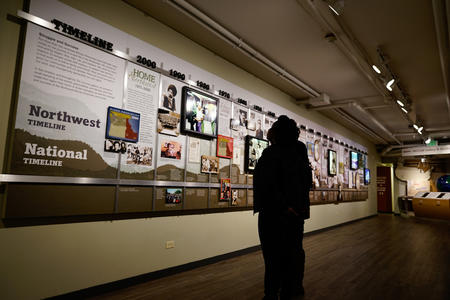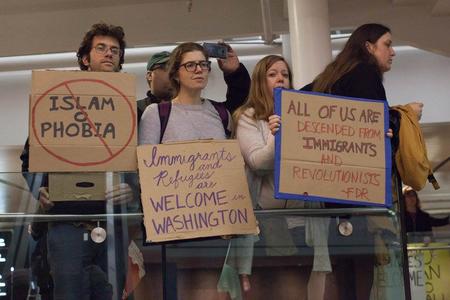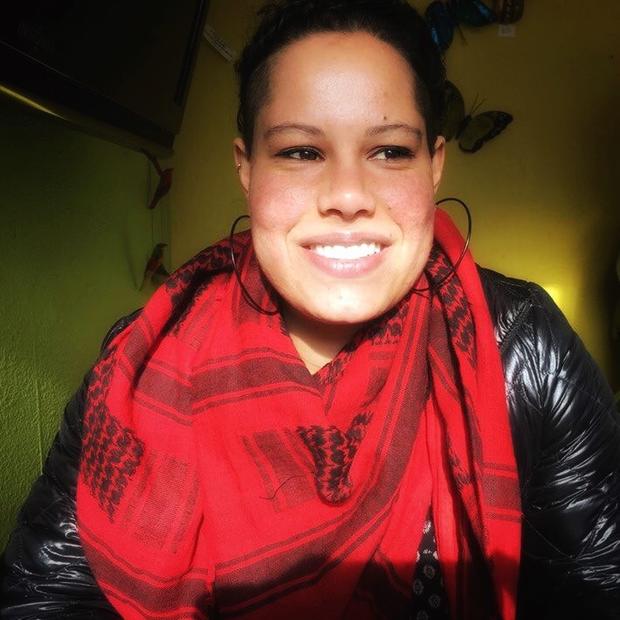Of the 998 people killed by police in 2018, Iosia Faletogo was the 995th, according to the Washington Post Fatal Force Database. Faletogo, a father and member of a well-known Samoan family, was shot and killed on New Year’s Eve on Aurora Avenue North after he fled from a traffic stop. The dashboard camera and body camera footage of the five officers involved at one point shows Faletogo with a handgun. However, at the moment he is shot his palms are flat on the ground, the handgun is unseen, and he is uttering the words, “I’m not reach.…”
A Google search of mainstream media — The Seattle Times, Q13 Fox, KOMO, even Crosscut — finds stories written since Faletogo was killed that outline his criminal history, some aspects of his family life, where he had lived and what was found on him and in his car.
The released camera footage shows five officers. They were put on administrative leave, but little is known about them. What about their disciplinary records? A few articles mentioned Jared Keller, identified as the police officer who shot Faletogo in the head. According to The Seattle Times, in December 2017, Keller was part of an incident involving deadly use of force by SPD in which seven officers, including Keller, shot and killed a man allegedly armed with a gun.
Reality is, the identities and disciplinary records of officers involved in excessive or deadly uses of force are protected. The lack of transparency not only keeps the public from knowing this information, but makes it hard to access it, even through a public disclosure request.
Why is this? The short answer is the information is protected by law and the Seattle Police Officers Guild (SPOG). Yet how can the public scrutinize police conduct and trust that officers are properly disciplined if the law (and the guild) protects them from basic disclosure? When shootings occur, especially in cases that prompt much public discourse, scrutiny and community outrage, citizens must be able to trust the system that investigates the incidents and ultimately disciplines officers, if and when there is substantiated misconduct. Even when there is no substantiated misconduct, the community must be able to trust that the investigation was thorough and above reproach.
There are instances in which a public employee’s disciplinary records are accessible by a public disclosure request, such as investigations of sexual misconduct and substantiated allegations of sexual misconduct. According to multiple court opinions, the information is to be disclosed when it is found to be of “legitimate public interest” and does not violate the employee’s “right to privacy.” The Washington Supreme Court confirmed that teachers have no right to privacy in complaints of sexual misconduct that are substantiated or when disciplinary action is taken because the misconduct is of legitimate public interest.
But when it comes to public disclosure records regarding police, they have many more protections — including the guild. These protections shield them from public scrutiny and keep the public from information that may further sow seeds of frustration and mistrust of the police.
We need a strong baseline for what accountability is in Seattle. In 2017, the Seattle City Council unanimously voted for new police accountability legislation, which was developed as a part of a five-year federal consent decree. The decree resulted from a Department of Justice investigation of the Seattle Police Department that found patterns of excessive use of force and “troubling” evidence of discriminatory policing.
In 2018, in an 8-1 vote, the council accepted a collective bargaining agreement (CBA) with the Seattle Police Officers Guild that conflicts with the 2017 legislation in multiple areas. Many police accountability advocates and community members opposed the CBA because of the conflicts. They included the city’s own Community Police Commission, the American Civil Liberties Union of Washington, the King County NAACP and Not This Time.
In a recent court filing, the Community Police Commission alleges the contract continues to shield officers by allowing appeals challenging disciplinary actions to be kept from the view of complainants, the public and the media. Does the public not have a legitimate interest in knowing who is patrolling our communities, especially if they have committed multiple acts of excessive use of force or deadly use of force?
California pushed for more transparency with Senate Bill 1421 in its state Legislature. Authored by State Sen. Nancy Skinner, D-Berkeley, the bill revised state open records laws and made several things subject to Public Records Act. As reported in the East Bay Express, they include “previously confidential information about police shootings, uses of force resulting in great bodily harm and sustained complaints of sexual assault and dishonesty against officers.” The California Supreme Court currently is determining whether SB 1421 applies to “Brady Lists,” a secretive database compiled by police that includes the names of officers who have engaged in acts of moral turpitude and dishonesty.
If you are a victim of police violence, your past seems to be an open book. The media and the police will share everything they have on you, no matter how far back it extends or how unrelated it is to the violence that ensued. But what if you are the perpetrator of police violence? What if a police officer has a substantiated history of lying? Or multiple excessive use of force complaints and/or substantiated violations? If a police officer has substantiated violations, why are they still allowed to police our communities? How can the public even question their continued presence on the police force if this information is so highly protected from the public eye? Is this not an issue of legitimate public interest?






